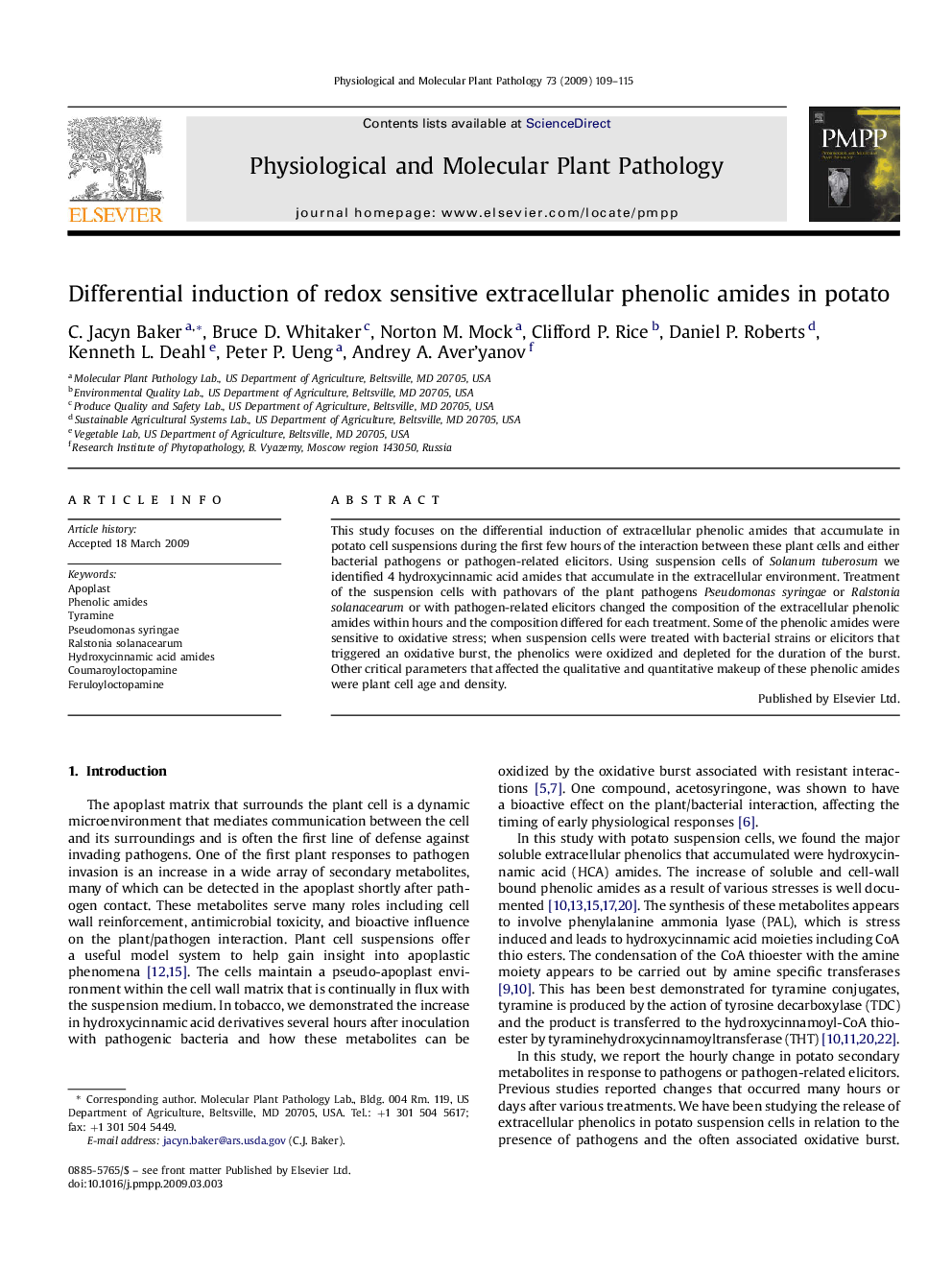| Article ID | Journal | Published Year | Pages | File Type |
|---|---|---|---|---|
| 2836635 | Physiological and Molecular Plant Pathology | 2008 | 7 Pages |
This study focuses on the differential induction of extracellular phenolic amides that accumulate in potato cell suspensions during the first few hours of the interaction between these plant cells and either bacterial pathogens or pathogen-related elicitors. Using suspension cells of Solanum tuberosum we identified 4 hydroxycinnamic acid amides that accumulate in the extracellular environment. Treatment of the suspension cells with pathovars of the plant pathogens Pseudomonas syringae or Ralstonia solanacearum or with pathogen-related elicitors changed the composition of the extracellular phenolic amides within hours and the composition differed for each treatment. Some of the phenolic amides were sensitive to oxidative stress; when suspension cells were treated with bacterial strains or elicitors that triggered an oxidative burst, the phenolics were oxidized and depleted for the duration of the burst. Other critical parameters that affected the qualitative and quantitative makeup of these phenolic amides were plant cell age and density.
